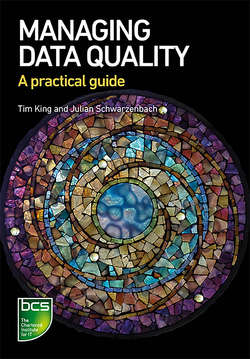Читать книгу Managing Data Quality - Tim King - Страница 32
На сайте Литреса книга снята с продажи.
ОглавлениеManaging Data Quality
16
Complex decisions
Decision making in most organisational contexts can range from very simple through to extremely complex. Simple decisions, such as where to send a technician, will possibly not require much input data and will only have limited consequences if the wrong decision is taken. In contrast, more complex decision making, such as strategic planning, life cycle costing and project planning, is likely to have more extensive decision logic, more significant consequences and a greater reliance on the quality of input data.
To look at a slightly different context, in a biology or physics experiment, it is likely to be understood that there are factors that cannot be fully controlled in the experiment and that the accuracy of measurements is not perfect. Therefore, results are often expressed as a range, for example 254 +/- 10. In the case of many complex business decisions, the quality of input data will be as variable as that encountered in such a biology experiment, yet typically the outputs are not likely to include any expression of sensitivity. This could easily lead to incorrect assumptions about the certainty of the decision.
In summary, you must understand the decisions that your data support so that you can determine the extent to which data quality will influence the reliability of those decisions.
Virtuous circle or downward spiral?
In general, the decision-making process will be influenced by data quality. What you should be trying to avoid is a downward spiral where poor data quality leads to poorer information quality. In turn, this will tend to lead to incorrect business decisions and hence worse results. A poorly thought out project, decision or activity is likely to lead to worse data being generated as a result of staff being demoralised by the inappropriate project, thereby continuing the downward spiral of ever decreasing data quality.
What you should be aiming for is a ‘virtuous circle’ (see Figure 2.1) whereby improvements in data quality deliver improvements in information quality. These in
Figure 2.1 The virtuous circle of data quality
